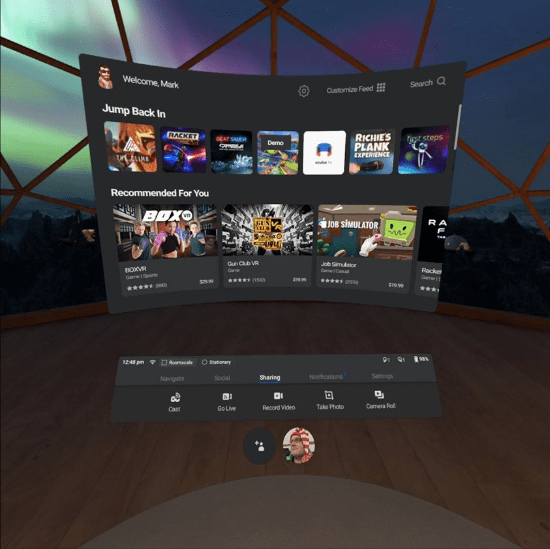Arizona State University used a grant to obtain 140 Mirage Solo headsets from Lenovo. Just over one third of students have elected to receive one, at no cost, since the program piloted their use in 2018. Alternately, students can view simulations on a computer or a Google Daydream device
A lot of people wear corrective lenses. Designers may need to start thinking about how the devices accommodate glasses.”
For some disciplines and pedagogical objectives, VR experiences may not be readily available, says Dr. Matthew Bramlet, pediatric cardiologist and physician at OSF Children’s Hospital of Illinois, assistant professor of pediatrics at the University of Illinois College of Medicine at Peoria,
my note: Mark Gill, it seems similar to the WYSWYG interface you want to create:
To address that, U of I’s medical college developed its own content. Approximately 40 faculty members have created more than 250 VR lectures. The college provides access to Enduvo, a VR authoring tool Bramlet helped create, and lab space, featuring ceiling-mounted workstations equipped with HTC VIVE headsets powered by a variety of Dell, HP and other computers.
Martina, do you want to approach them and ask how willing they would be to share their learning objects for our nursing programs?
my note: Martina, do same – approach this program
Alice Butzlaff, an assistant professor with The Valley Foundation School of Nursing at San Jose State University, created original teaching exercises through a program sponsored by eCampus, a university resource that offers design and training assistance to help faculty integrate AR/VR technology, including workshops and demos of its HTC VIVE, Samsung Gear VR and other equipment.
My note: Martina
Reality Check
Keep these factors in mind when designing a campus VR lab.
Connectivity: On-campus and online students may have different considerations in order to stream VR content smoothly, so plan accordingly to ensure everyone has high-quality access.
Staff oversight: A program manager or faculty member can manage access to equipment, particularly if limited headsets are available.
Alternative options: Some users experience vertigo or “VR sickness,” says EDUCAUSE’s D. Christopher Brooks, so instructors should consider other ways they can participate in VR-based projects.

That was a lot of people in the Stanford lab! Photogrammetry scans of real anatomy for VR education! Done from anywhere in the world! Scale up the models and walk through the body! Get a totally different understanding of a subject! Education is reaching a turning point! I wonder how universities and colleges are going to adapt? Will they be quick enough? Stanford just purchased x70 Oculus VR Quest we just ordered another 350 headsets for a client! Things are going to hot up!
Thanks Again It was awesome! Daniel Dyboski-Bryant Chris Madsen Brian Waterfield Oscar Molnar
#vr #virtualreality #vrtraining #360video #photogrammetry #rivr #youthinkyouknowvr #3d #education Stanford University #stanford